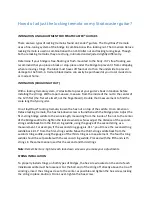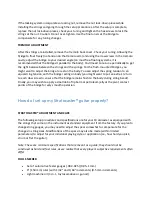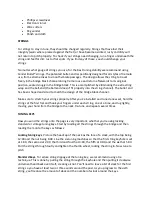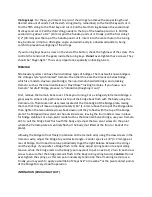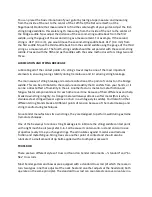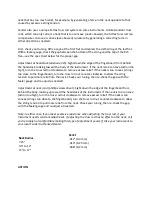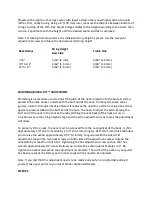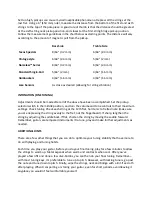
Phillips screwdriver
Electronic tuner
Wire cutters
Peg winder
Polish and cloth
STRINGS
For strings to stay in tune, they should be changed regularly. Strings that have lost their
integrity (worn where pressed against the fret) or have become oxidized, rusty and dirty will
not return to pitch properly. To check if your strings need changing, run a finger underneath the
string and feel for dirt, rust or flat spots. If you find any of these, you should change your
strings.
No matter what gauge of strings you use, for the best tuning stability we recommend using
Fender Bullet® strings. The patented bullet-end is specifically designed for all styles of tremolo
use, from extreme dives to smooth vibrato passages. The design allows the string to travel
freely in the bridge block channel during tremolo use and return afterwards to its original
position, seated snugly in the bridge block. This is accomplished by eliminating the extra string
wrap and the ball-end (the ball end doesn't fit properly into the string channel). The bullet end
has been shaped and sized to match the design of the bridge block channel.
Make sure to stretch your strings properly. After you've installed and tuned a new set, hold the
strings at the first fret and hook your fingers under each string, one at a time, and tug lightly,
moving your hand from the bridge to the neck. Re-tune and repeat several times.
TUNING KEYS
How you wind the strings onto the pegs is very important, whether you're using locking,
standard or vintage tuning keys. Start by loading all the strings through the bridge and then
loading them onto the keys as follows:
Locking tuning keys. Picture the headcap of the neck as the face of a clock, with the top being
12:00 and the nut being 6:00. Line the six tuning machines so that the first string keyhole is set
at 1:00, the second at 2:00, the third and fourth at 3:00, the fifth at 4:00, and the sixth at 5:00.
Pull the strings through tautly and tighten the thumb wheel, locking the string in. Now tune to
pitch.
Standard keys. To reduce string slippage at the tuning key, we recommend using a tie
technique. This is done by pulling the string through the keyhole and then pulling it clockwise
underneath and back over itself; creating a knot. You'll need to leave a bit of slack for the first
string so you have at least two or three winds around the post. As you progress to the sixth
string, you'll reduce the amount of slack and the number of winds around the keys.

